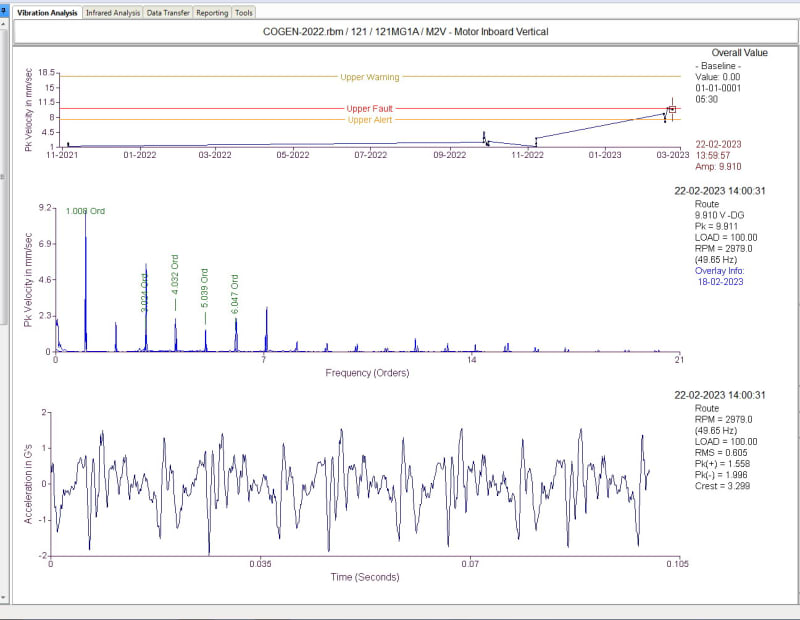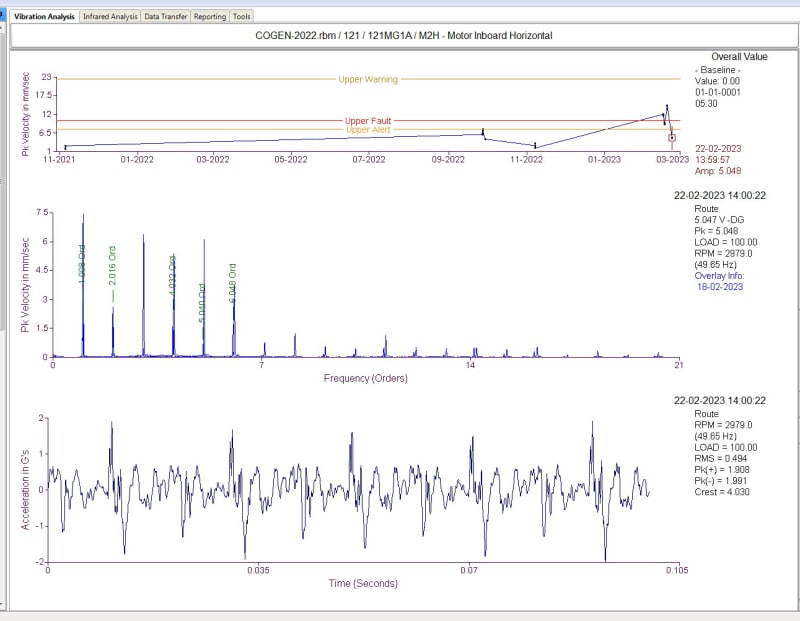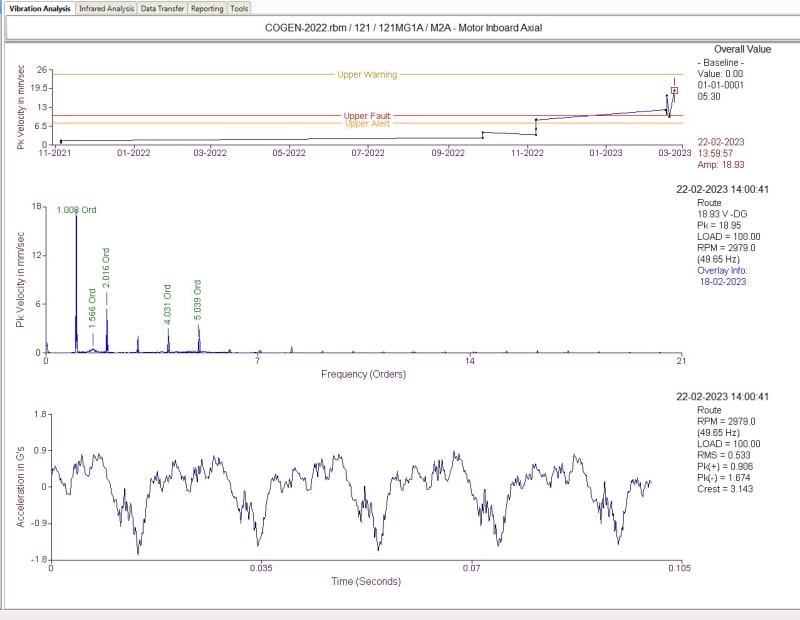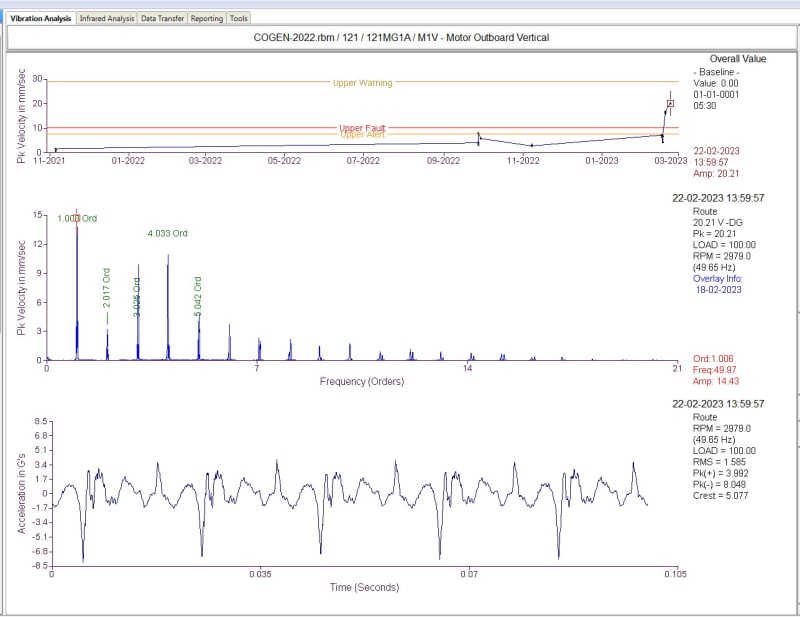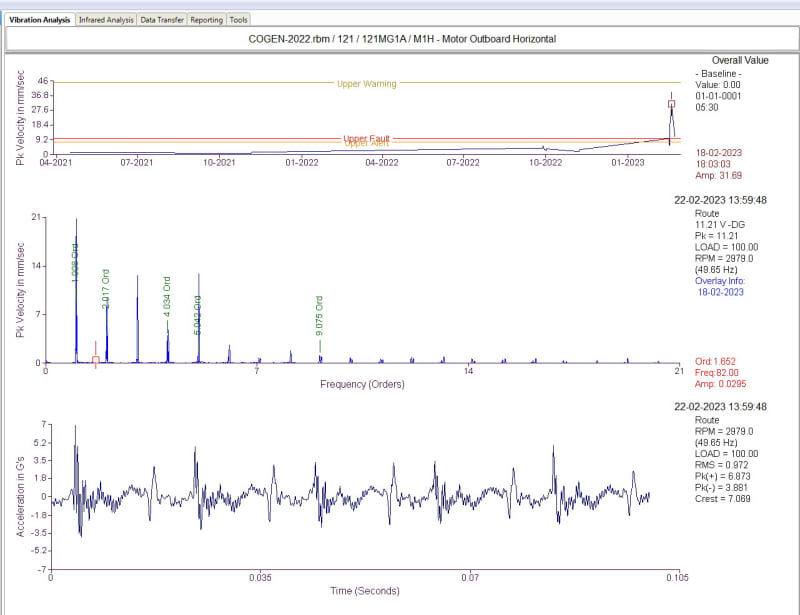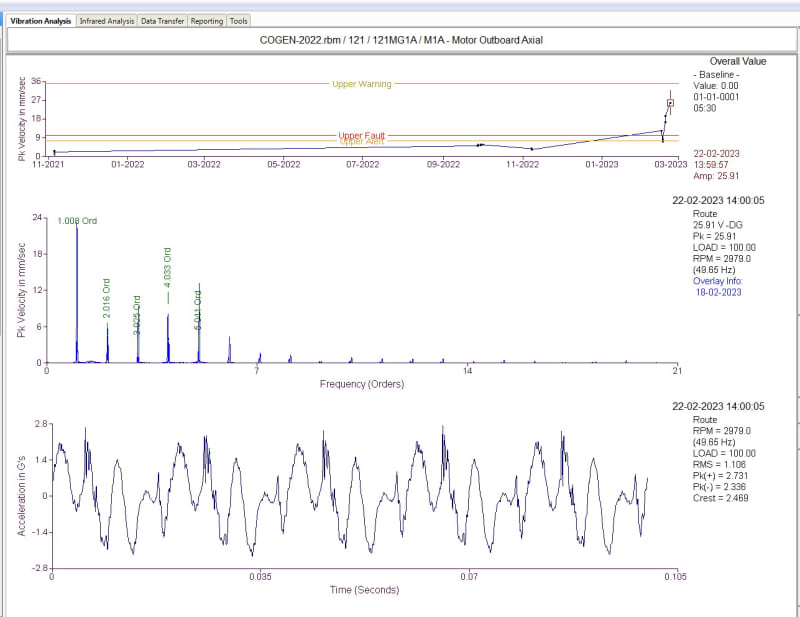a few thoughts:
Velocity looks a little higher on the NDE. Acceleration TWF peaks look a lot higher on the NDE. That seems to rule out a few things like coupling problem or misalignment and focus attention toward the NDE.
Spectra show 1x and harmonics on all positions. There looks to be some low level non-sync peaks that are near each harmonic starting out around 8x and continuing to 20x. Can you identify the frequency pattern of those? (put on log scale or change to acceleration to make those peaks more prominent, and label the peaks). Do those correspond to pole pass spacing or some other identifiable pattern?
TWF shows some interesting features, periodic at 1x but multiple impacts per revolution, not necessarily equally spaced within a revolution (but same spacing for every revolution).
Is there anything special about most recent reading where DE Horizontal decreased (after increasing just before that)? Or seemingly a random change?
What type of bearings does this machine have?
Is it an induction motor? Open construction or tefc?
Just for general info, what is the hp and what is the machine driving? (it probably doesn't make a difference but makes it easier to visualize the machine we're talking about).
at this point it has the appearance of some kind of looseness (or less likely some other type of impacting) near the NDE for what that's worth. The options I'd think about are first external inspection for looseness including at the support. If nothing found there then tagout the machine for further inspections of bearings, fits, bearing clearances if applicable for sleev bearing, any fan, and maybe rotor near the nde. Answers to questions might change my swag and recommendations a little, or maybe not.
